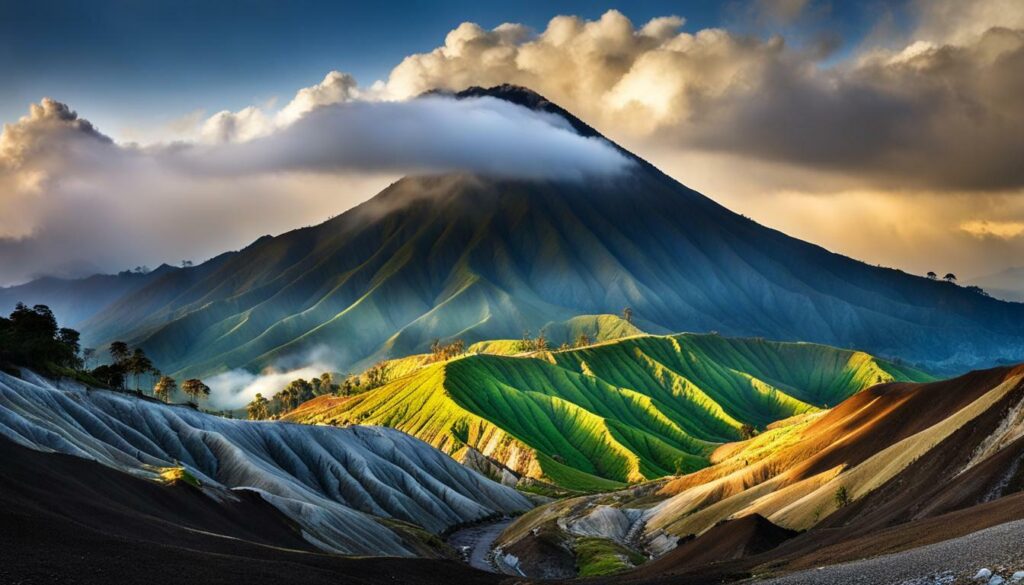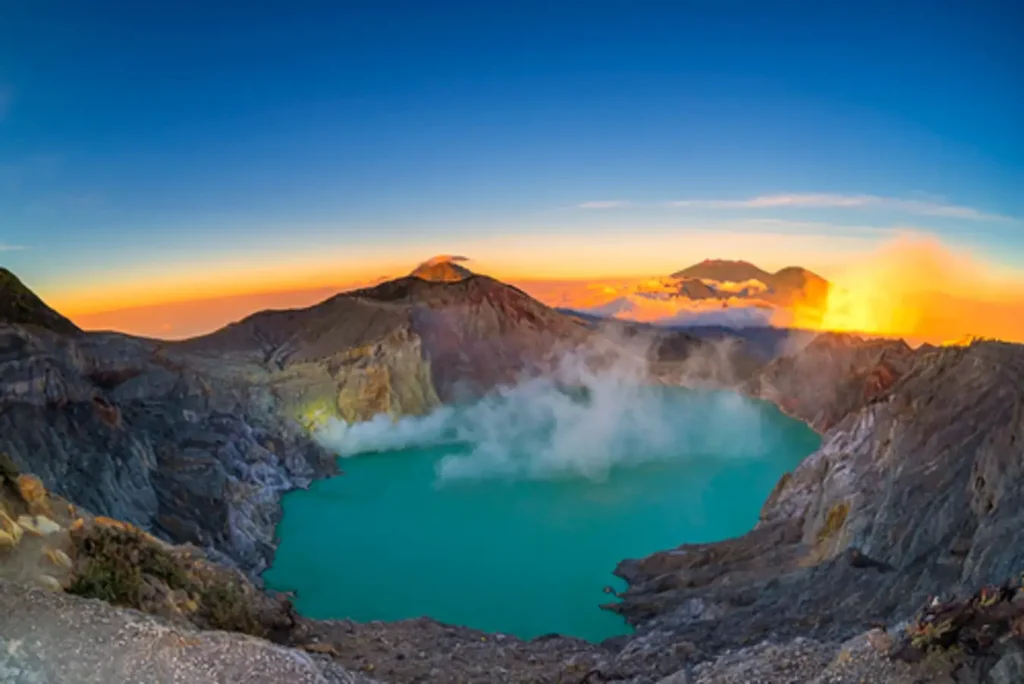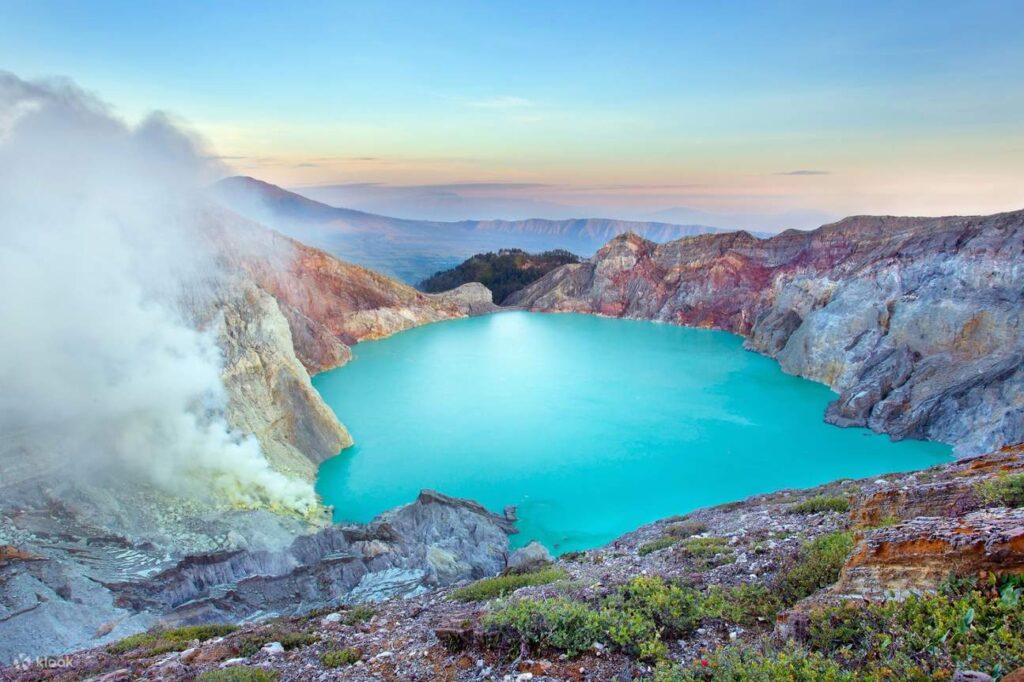As an active volcano located in East Java, Indonesia, Mt Ijen’s weather conditions can be unpredictable and affect travelers’ experiences. To make the most of your trip, it’s essential to stay informed about the current weather conditions and forecasted changes.
In this comprehensive guide, we will provide you with up-to-date information on Mt Ijen weather, including forecasts, current conditions, and safety considerations. This guide will help you prepare for your trip to Mt Ijen and ensure you have a safe and enjoyable experience.
Key Takeaways:
- Staying informed about Mt Ijen weather is crucial for travelers planning a visit.
- It’s essential to understand the overall climate and seasonal variations to determine the best time to visit.
- Regular updates on the current weather at Mt Ijen can help travelers stay safe and plan accordingly.
- Knowing how to dress and pack for the weather is crucial for a comfortable trip.
- Safety considerations should be taken into account in different weather conditions, especially when visiting the crater or volcano.
Understanding the Climate at Mt Ijen
Mount Ijen is located in East Java, Indonesia and is a popular destination for tourists and trekkers alike. Understanding the climate at Mt Ijen is crucial for travelers, as the weather can vary greatly depending on the time of year.
The climate at Mt Ijen is tropical, with temperatures ranging from 15°C (59°F) to 28°C (82°F) throughout the year. However, due to its high altitude of over 2,000 meters (6,500 feet) above sea level, temperatures can drop significantly at night, so it’s essential to pack accordingly.
Visitors to Mt Ijen can expect moderate to heavy rainfall year-round, with the wettest months being from November to April. The dry season, from May to October, tends to have less rainfall, making it a popular time to visit.
The climate at Mt Ijen is also influenced by the monsoon season, which typically occurs from September to December. During this time, the winds can be strong, making it difficult to trek up the mountain and to the Ijen Crater.
Overall, the best time to visit Mt Ijen is during the dry season, from May to October, when the weather is generally dry and pleasant. However, keep in mind that weather can be unpredictable, so always check the latest forecasts and prepare for all types of weather conditions.
Seasonal Changes and Variations
As with most destinations, Mt Ijen’s weather varies throughout the year. Understanding the seasonal changes can help you decide when to visit and what to expect during your trip.
| Season | Temperature (°C) | Weather Conditions |
|---|---|---|
| December-February | 14-26 | Monsoon season with frequent rain and strong winds |
| March-May | 16-28 | Dry season with occasional rain |
| June-August | 16-26 | Dry season with cool temperatures |
| September-November | 16-28 | Dry season with occasional rain and mild temperatures |
The temperature at Mt Ijen stays fairly consistent throughout the year, ranging from 14°C in the colder months to 28°C during the warmer season. However, this doesn’t mean you’ll experience the same weather conditions during your visit, so it’s always a good idea to check the forecast beforehand.
Additionally, it’s important to note that the weather conditions around the Ijen crater and volcano can be unpredictable and change quickly. Visitors should always be prepared for sudden changes in weather and should follow safety guidelines when exploring the area.
Current Weather Updates
For travelers planning a visit to Mt Ijen, it’s important to stay informed about the current weather conditions to ensure a safe and enjoyable experience. As of the latest mt ijen weather update, the overall temperature ranges from 14°C to 23°C (57°F to 73°F), with occasional rainfall and cloudy skies. However, weather conditions at the Ijen crater and Ijen volcano can vary significantly from the surrounding areas.
Visitors are advised to check the mt ijen weather forecast before heading out on their journey and to stay alert for any sudden weather changes that may occur. It’s recommended to bring rain gear and warm clothing for the cooler temperatures at higher elevations, along with sturdy footwear for hiking on the uneven terrain.
In addition, travelers should be aware of potential hazards during different weather conditions, such as the release of toxic gases from the crater during windy or rainy weather. It’s essential to follow safety guidelines and instructions from local guides at all times.
Tips for Dressing and Packing
When preparing for a visit to Mt Ijen, it’s essential to pack appropriate clothing and gear to ensure comfort and safety amidst the varying weather conditions.
Firstly, it is worth noting that the temperature at Mt Ijen can be significantly cooler than the surrounding areas due to its elevation. In general, the temperature ranges from 10°C to 20°C, and it can reach as low as 5°C in the early morning.
To avoid discomfort and potential health risks, it is recommended to dress in layers, so you can add or remove clothing as needed. Consider packing warm clothing such as a fleece jacket, a beanie, gloves, and thermal underwear. A waterproof and windproof shell is also recommended, as rain and strong winds are not uncommon at Mt Ijen.
It’s also essential to wear appropriate footwear, as the terrain can be rocky and challenging to traverse. Comfortable and sturdy hiking shoes or boots with good traction are recommended.
In addition to clothing, there are a few essential items to pack when visiting Mt Ijen. A flashlight or headlamp is crucial, especially if you plan to hike early in the morning to catch the sunrise. A first aid kit, insect repellent, and a personal water bottle are also recommended.
By packing appropriately for the weather and terrain, you’ll ensure a more comfortable and enjoyable experience at Mt Ijen.
Safety Considerations in Different Weather Conditions
When planning a visit to Mt Ijen, it is essential to prepare for various weather conditions, as they can impact safety and comfort during the trip. Here are some safety considerations for different weather conditions at Mt Ijen, including those specific to the Ijen crater and volcano.
Hot and Dry Weather
Travelers visiting during hot and dry weather should be aware of the risk of dehydration and heat exhaustion. It is essential to drink plenty of water and fluids and wear lightweight, breathable clothing to minimize the risk of overheating. Additionally, the hot and dry weather increases the risk of wildfires, so visitors should avoid smoking, lighting fires or camping without permission.
Rainy and Wet Weather
During rainy and wet weather, travelers should be cautious when hiking or trekking on the steep slopes. It is essential to wear appropriate footwear with good traction and use trekking poles to help maintain balance and prevent slipping. Moreover, visitors should carry rain gear like raincoats, waterproof backpacks, and camera covers to protect themselves and their equipment from the rain.
Cold Weather
Visitors planning to visit the Ijen crater during cold weather should be prepared for low temperatures, which can drop to as low as 5°C. Warm clothing like jackets, sweaters, and gloves are necessary to stay warm, and sturdy footwear is essential to prevent slipping on potentially icy trails. Additionally, visitors should bring a flashlight or headlamp if they plan to visit the crater at night when temperatures can be even colder.
Regardless of the weather conditions, it is crucial to follow the park’s safety guidelines and use caution when exploring the volcano. Visitors should remain on designated trails and avoid the temptation to stray off the path. Furthermore, visitors should listen to guides and park officials and follow their instructions at all times to ensure a safe and enjoyable experience at Mt Ijen.
Conclusion
Staying informed about Mt Ijen weather is crucial for travelers planning a visit to this stunning natural wonder. By understanding the overall climate and seasonal changes, visitors can determine the best time to visit and what to expect in terms of weather conditions. Regular updates on the current weather will ensure travelers are prepared for any sudden changes or significant weather events that may impact their trip.
When packing for the trip, it’s essential to dress appropriately for the weather at Mt Ijen. Comfortable clothing and necessary items will ensure travelers are prepared for any conditions they may encounter. Safety considerations vary based on weather conditions, and visitors should be aware of potential challenges and how to navigate them safely.
Stay Ahead of Mt Ijen Weather
Don’t let the weather spoil your trip to Mt Ijen. Stay ahead of the weather by regularly checking for weather forecasts, updates, and any changes to weather conditions. By staying informed and prepared, you can ensure a successful and memorable trip to one of Indonesia’s most breathtaking natural wonders.
Remember to keep these keywords in mind when planning your trip to Mt Ijen: mt ijen weather, mt ijen forecast, ijen weather conditions, mt ijen temperature, ijen crater weather, ijen volcano weather, mt ijen weather update. These keywords will help you find the information you need to stay informed about the weather at Mt Ijen.
FAQ
What is the weather like at Mt Ijen?
The weather at Mt Ijen can vary depending on the season. It is generally cool and misty throughout the year, with temperatures ranging from 10 to 20 degrees Celsius. However, it is important to check the forecast before your visit as weather conditions can change.
When is the best time to visit Mt Ijen?
The best time to visit Mt Ijen is during the dry season, which is from April to October. During this time, the weather is more favorable for trekking and exploring the area. However, it can get crowded, so consider visiting during weekdays or less popular months for a more peaceful experience.
Is it necessary to bring warm clothing to Mt Ijen?
Yes, it is recommended to bring warm clothing, especially if you plan to visit in the early morning or late evening. The temperatures can drop significantly, so having a jacket or sweater will help keep you comfortable during your trek.
Can I expect rain at Mt Ijen?
Rainfall is common at Mt Ijen, particularly during the rainy season which occurs from November to March. It is advisable to bring a raincoat or waterproof jacket to protect yourself from unexpected showers during your visit.
Are there any safety considerations related to the weather at Mt Ijen?
Yes, it is crucial to be aware of the weather conditions before embarking on your trek to Mt Ijen. Fog and mist can reduce visibility, making it challenging to navigate the trails. Additionally, during periods of heavy rain, the trekking paths can become slippery, so exercise caution and wear appropriate footwear.
How can I stay updated on the weather at Mt Ijen?
To stay informed about the weather conditions at Mt Ijen, it is recommended to check online weather forecasts or consult with local guides or tour operators. They can provide you with the most up-to-date information and advise you on whether it is safe to proceed with your plans.





